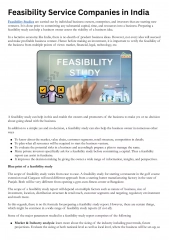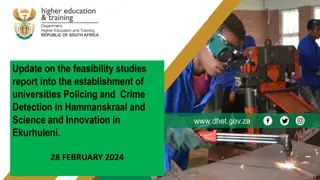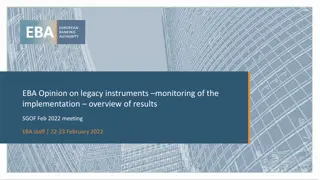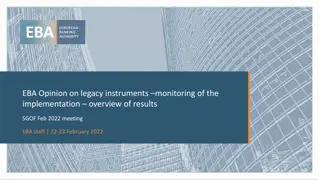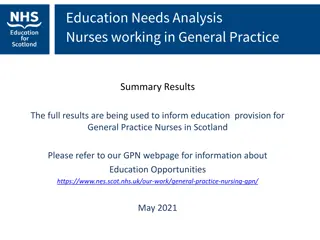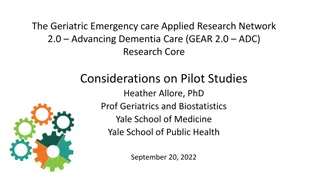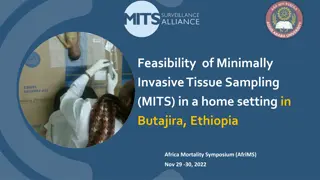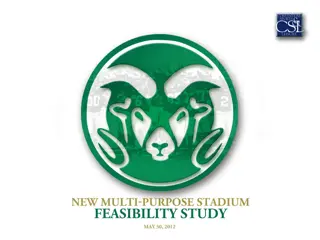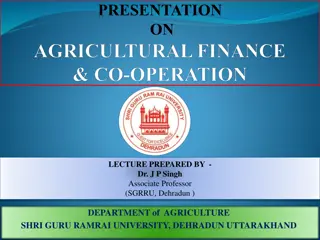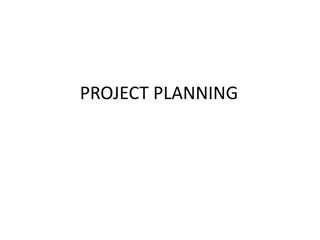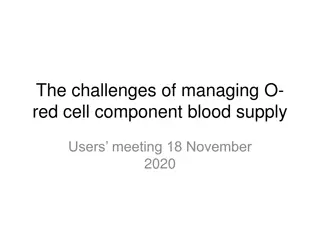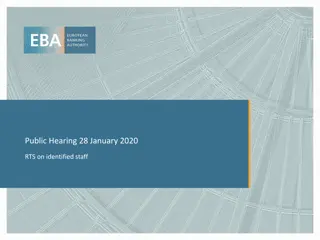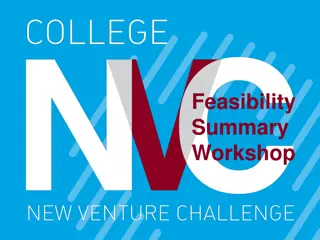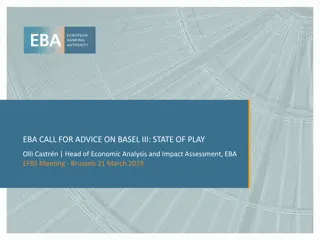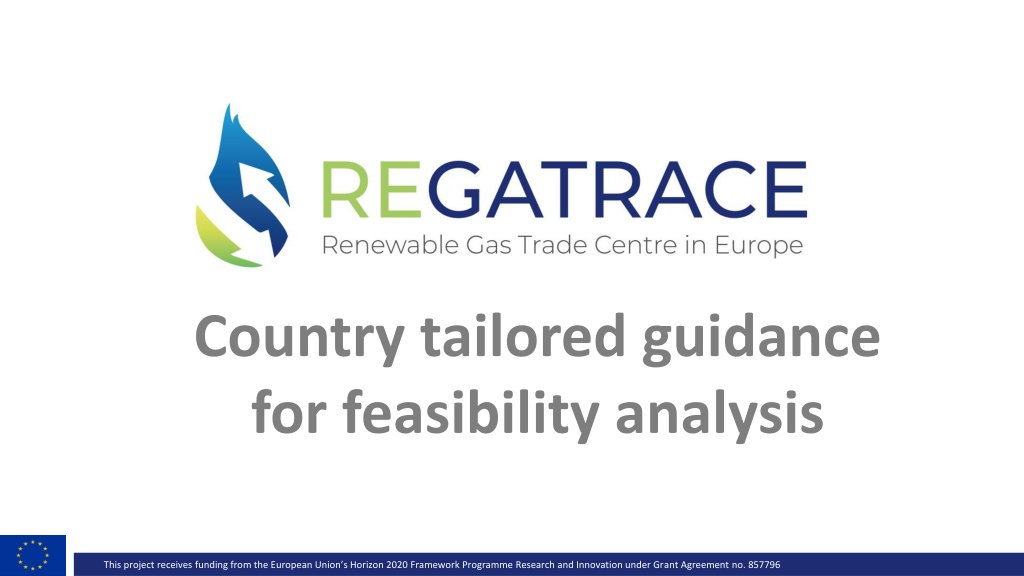
Tailored Guidance for Biomethane Investment Feasibility Analysis
This project, funded by the European Union's Horizon 2020 Programme, aims to provide country-specific guidance on feasibility analysis for biomethane investment projects. The study evaluates the viability of projects and helps project developers assess political, economic, technical, environmental, and financial factors. It includes workshops, cash flow calculations, and tailored European-level guidance. Feasibility analysis determines project worthiness and aids in securing support from investors, financing institutions, authorities, and politicians.
Download Presentation

Please find below an Image/Link to download the presentation.
The content on the website is provided AS IS for your information and personal use only. It may not be sold, licensed, or shared on other websites without obtaining consent from the author. Download presentation by click this link. If you encounter any issues during the download, it is possible that the publisher has removed the file from their server.
E N D
Presentation Transcript
Country tailored guidance for feasibility analysis This project receives funding from the European Union s Horizon 2020 Framework Programme Research and Innovation under Grant Agreement no. 857796
Objective Producing country tailored guidance on feasibility analysis Based on a general guidance on European level Through a participatory process The guidance for feasibility analysis is designed to assist project developers in realising biomethane investment projects based on political, economical, technical, environmental, route to market, optimal scale and financial factors influencing the feasibility of the biomethane investment projects. Project meeting, Month 18, 2020, online meeting Page 1
Country tailored The general guidance on European level is tailored with country specific information by the national biogas associations. In view of specific circumstances prevailing in the country. Adapted to local circumstances for enabling direct usage by interested parties in the country. The paper contain The Example of cash flow calculations for an imaginary biomethane plant with imaginary numbers. Third participatory workshop: presentation of the draft results Fourth participatory workshop: presentation of consolidated guidance for feasibility analysis Project meeting, Month 18, 2020, online meeting Page 1
What is the feasibility study? The feasibility analysis is used to determine the viability of a project idea, ensuring the project is legally and technically feasible as well as economicall justifiable. The feasibility study answers the basic question whether the project is worth the investment. A feasibility analysis evaluates the project s potential for succes. Its perceived objectivity is an essential factor for the credibility of the study both for potential investors and lending institutions. Should we proceed with the specific investment project? Project meeting, Month 18, 2020, online meeting Page 2
Where can de Feasibility study be used for? Two types of invesments are covered. The guidance focuses on the feasibilty of a green-field biomethane investment project Nevertheless, it can be used as well to convert an electricity generating AD plant to a biomethane producer Based upon the analysis, the project developers can approach potential investors and financing institutions. The study will also assist the project developers in their communication with the respective authorities and politicians in securing their support for the project. Project meeting, Month 18, 2020, online meeting Page 2
Core elements of the Feasibility study TECHNICAL FEASIBILITY What raw materials (substrates) are available at what conditions for the anaerobic digestion unit? Sustainability of agri feedstock substrate? What is the most appropriate technology to process the raw materials (yields, material balances, etc.)? What will be the volumes and characteristics of the main product (biomethane) and the by-products (digestate, carbon dioxide, etc)? What are the regulatory standards surrounding the main product, the by-products, and their use? What investments are needed for realising the production? How will the energy consumption of the facility be covered (energy balances, etc.)? What are the technical conditions for grid connection? What are the considerations and conditions for the site selection? Project meeting, Month 18, 2020, online meeting Page 2
Core elements of the Feasibility study MARKET FEASIBILITY What are the market segments targeted (transport fuel, heating, industry)? Who are the potential customers and how many of them are there? How will biomethane and the by-products be sold? What are the available support schemes and what are the conditions for participating? Are there realistic export possibilities? What are the prices and conditions for external energy supplies? What are the costs of raw material supplies, is there a competition for raw materials? Project meeting, Month 18, 2020, online meeting Page 2
Core elements of the Feasibility study COMMERCIAL FEASIBILITY What are the potential sales volumes in different segments? What is the pricing structure applicable on the market? How far is the feasibility dependent on state aid (financial support)? What are the sensitivity points for the business in terms of revenues? What are the expected financial indicators of the investment project (IRR, NPV, PI, DSCR)? How much own funds are required to realise the investment and start operating? What are the conditions for securing external finance? Project meeting, Month 18, 2020, online meeting Page 2
Core elements of the Feasibility study OVERALL RISK ASSESMENT What are the major risks associated with the operation? What is the survival outlook for each of the risks? How sensitive are the profits? What are the best ways to minimize these risks? Project meeting, Month 18, 2020, online meeting Page 2
Key factors for successful project development Stable, long-term political commitment Cost of raw material supplies have a decisive importance Technologies which have the needed flexibility to adjust to changes in raw material composition Location offering guaranteed long-term sustainable substrate supplies Selection of proven an reliable technology Long-term placement of the produced biomethane must be secured from the start The placement of the fermentation residue [digestate or bio fertilisers] Good communication to local stakeholders is key Project meeting, Month 18, 2020, online meeting Page 2
Timeline Ongoing -> Q4 2021: Adaptation of the general guidance to the domestic environment (EBA + LTPs) Q4 2021 (by December): Presentation & discussion of the draft country tailored guidance at the third participatory WS for consolidation (Partners and LTPs) Q1 2022 (by March): feasibility studies (in BE, CZ, ES, IE, IT, and PL) Q2 2022 (by May): Final country tailored guidance ready (EBA + Partners + LTPs) Q2 2022 (by May): Final presentation of the consolidated country tailored guidances at the fourth participatory WS (Partners and LTPs) September 2022: D6.4 submitted (EBA) Project meeting, Month 18, 2020, online meeting Page 17
Thanks for your attention! Mieke Decorte European Biogas Association (EBA) Decorte@europeanbiogas.eu www.europeanbiogas.eu This project receives funding from the European Union s Horizon 2020 Framework Programme Research and Innovation under Grant Agreement no. 857796

